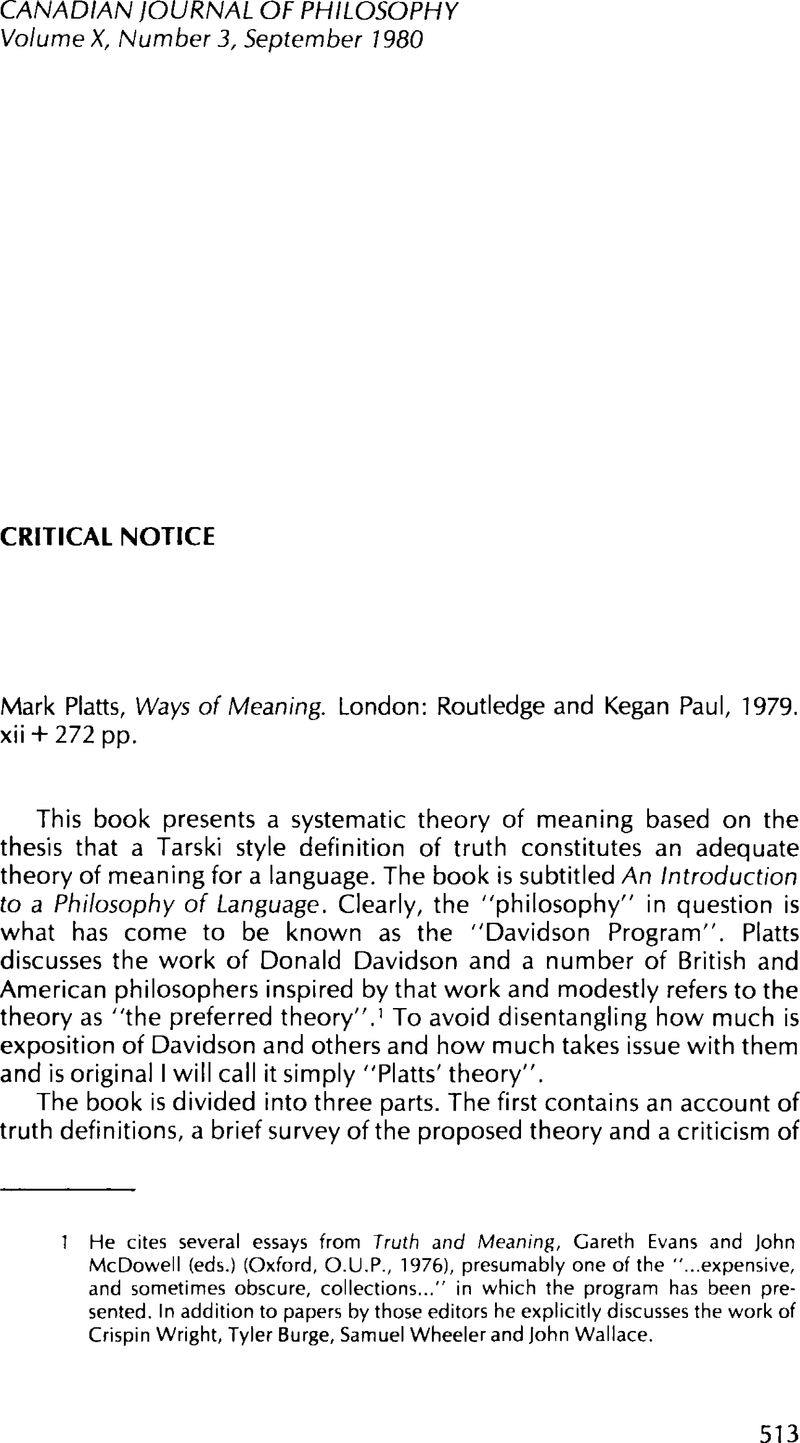Published online by Cambridge University Press: 01 August 1979

1 He cites several essays from Truth and Meaning, Evans, Gareth and McDowell, John (eds.) (Oxford, O.U.P., 1976),Google Scholar presumably one of the “ … expensive, and sometimes obscure, collections …” in which the program has been presented. In addition to papers by those editors he explicitly discusses the work of Crispin Wright, Tyler Burge, Samuel Wheeler and John Wallace.
2 Davidson, Donald “Radical Interpretation”, Dialectica, 27 (1973), pp. 313-28.CrossRefGoogle Scholar
3 Lewis, David “Language and Languages” in Minnesota Studies in Philosophy of Science, Vol. VI, K. Gunderson ed. (Univ. Minn. Press, Minneapolis, 1975)Google Scholar Steven Schiffer, Meaning, Ch. 5, (Oxford, O.U.P. 1972)
4 Hilary Putnam, “The Meaning of ‘Meaning’”. Gunderson, K. (ed.), Language, Mind and Knowledge, Minnesota Studies in the Philosophy of Science, VII (University of Minnesota Press, Minneapolis, 1975)Google Scholar
5 See Wallace, John “Nonstandard Theories of Truth” in The Logic of Grammar, Davidson, D. and Harman, G. (eds.) (Dickenson, 1973)Google Scholar and Gupta, Anil “Modal Logic and Truth”, Journal of Philosophical Logic, 7 (1978), pp. 441-72.CrossRefGoogle Scholar
6 On page 41 Platts seems to claim that Tarski is misinterpreted and really showed that a language can define its own truth predicate provided that it does not contain the mechanisms needed to convert that recursive definition into an explicit one. “Tarski's Theorem” shows that no predicate, primitive, or introduced by a recursive definition, in a language able to express its own syntax can allow the proof of all T-sentences: “p” is true iff p. Platts’ two-page treatment of this issue is at the least too brisk.